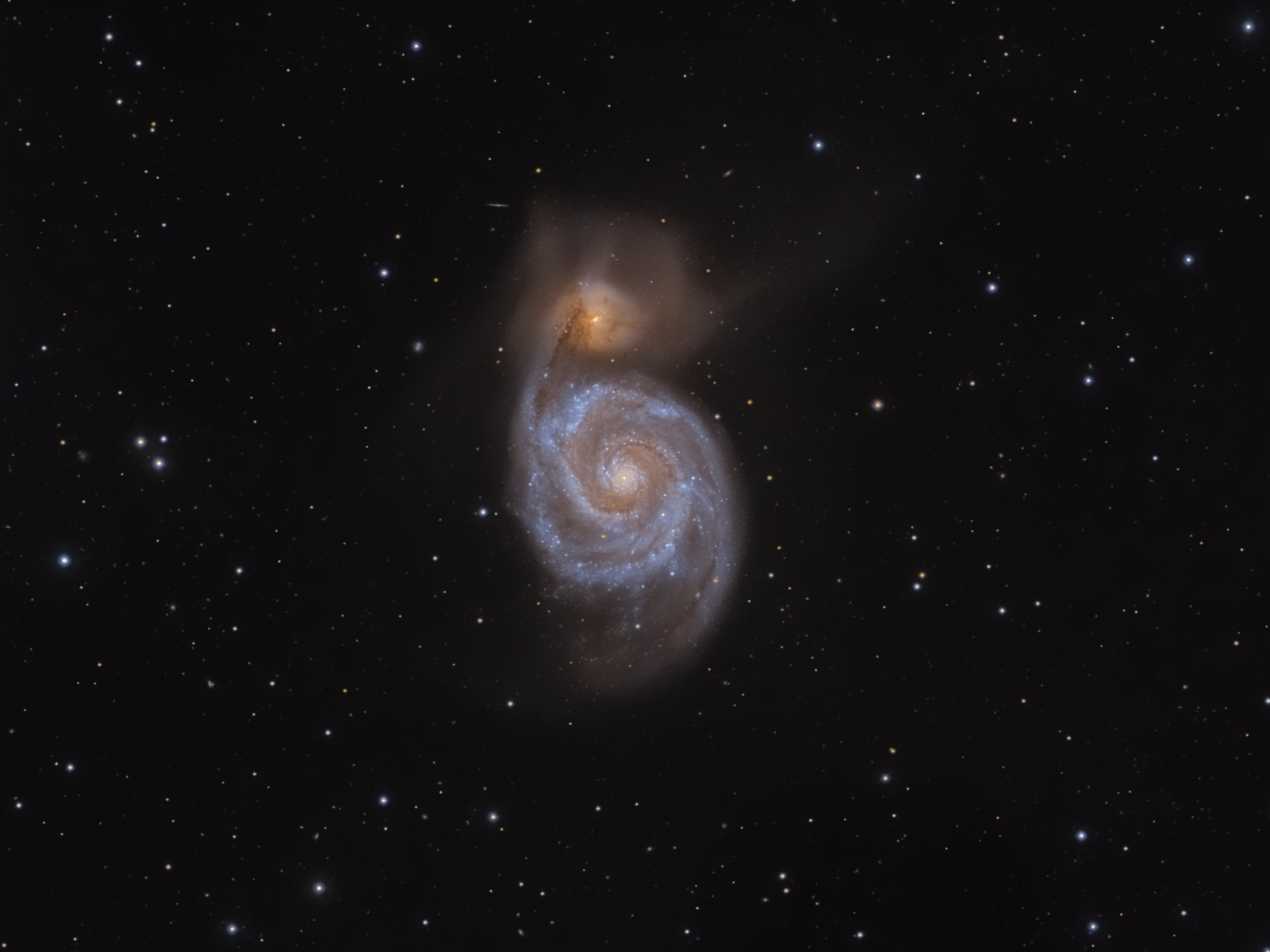

When seen through a 100 mm telescope the basic outlines of M51 (limited to 5×6') and its companion are visible. M51 is visible through binoculars under dark sky conditions, and it can be resolved in detail with modern amateur telescopes. Its declination is, rounded, +47°, making it circumpolar (never setting) for observers above the 43rd parallel north it reaches a high altitude throughout this hemisphere making it an accessible object from the early hours in November through to the end of May, after which observation is more coincidental in modest latitudes with the risen sun (due to the Sun approaching to and receding from its right ascension, specifically figuring in Gemini, just to the north). The image of the Whirlpool Galaxy in visible light (left) and infrared light (right)ĭeep in the constellation Canes Venatici, M51 is often found by finding the easternmost star of the Big Dipper, Eta Ursae Majoris, and going 3.5° southwest. Sometimes the designation M51 is used to refer to the pair of galaxies, in which case the individual galaxies may be referred to as M51a (NGC 5194) and M51b (NGC 5195). The advent of radio astronomy and subsequent radio images of M51 unequivocally demonstrated that the Whirlpool and its companion galaxy are indeed interacting. These " spiral nebulae" were not recognized as galaxies until Edwin Hubble was able to observe Cepheid variables in some of these spiral nebulae, which provided evidence that they were so far away that they must be entirely separate galaxies. In 1845, William Parsons, 3rd Earl of Rosse, employing a 72-inch (1.8 m) reflecting telescope at Birr Castle, Ireland, found that the Whirlpool possessed a spiral structure, the first "nebula" to be known to have one. Its companion galaxy, NGC 5195, was discovered in 1781 by Pierre Méchain, although it was not known whether it was interacting or merely another galaxy passing at a distance. What later became known as the Whirlpool Galaxy was discovered on October 13, 1773, by Charles Messier while hunting for objects that could confuse comet hunters, and was designated in Messier's catalogue as M51.

Its pair with NGC 5194 is among the most famous and relatively close interacting systems, and thus is a favorite subject of galaxy interaction models.
#SPIRAL GALAXY M51 PROFESSIONAL#
The Whirlpool Galaxy has been extensively observed by professional astronomers, and its pair with NGC 5195 who study it to understand galaxy structure (particularly structure associated with the spiral arms) and galaxy interactions. The galaxy and its companion, NGC 5195, are easily observed by amateur astronomers, and the two galaxies may be seen with binoculars.

It is between 23 and 31 million light-years away and 76,900 ly (23,580 pc) in diameter. It lies in the constellation Canes Venatici, and was the first galaxy to be classified as a spiral galaxy. The Whirlpool Galaxy, also known as Messier 51a ( M51a) or NGC 5194, is an interacting grand-design spiral galaxy with a Seyfert 2 active galactic nucleus. (diameter 25.0 mag/arcsec 2 B-band isophote) The smaller object in the upper right is M51B or NGC 5195.


 0 kommentar(er)
0 kommentar(er)
